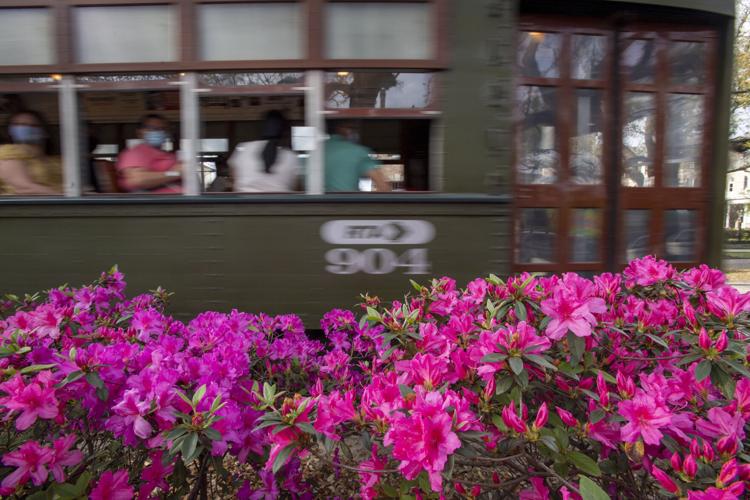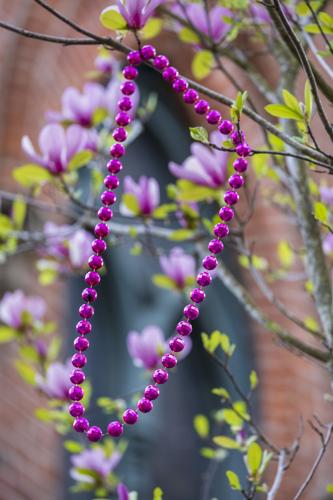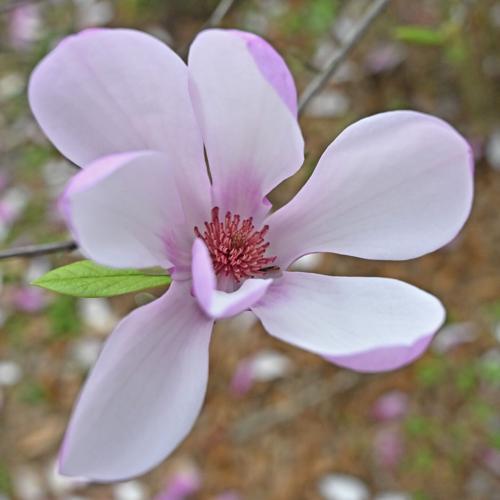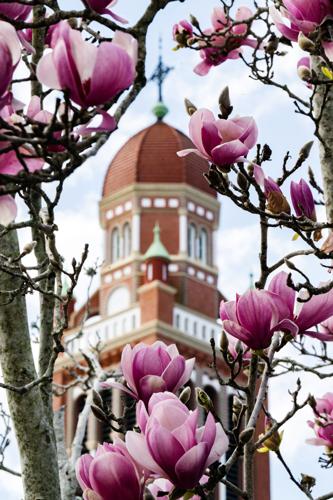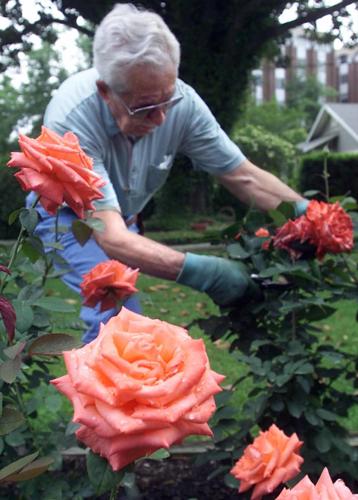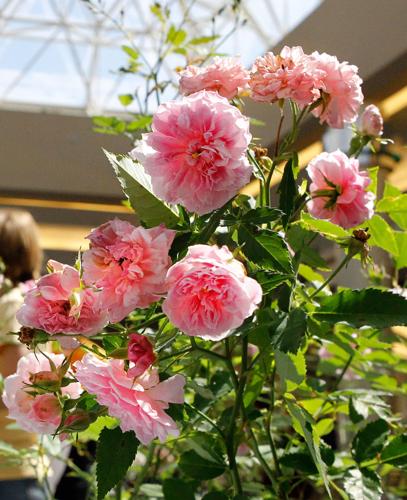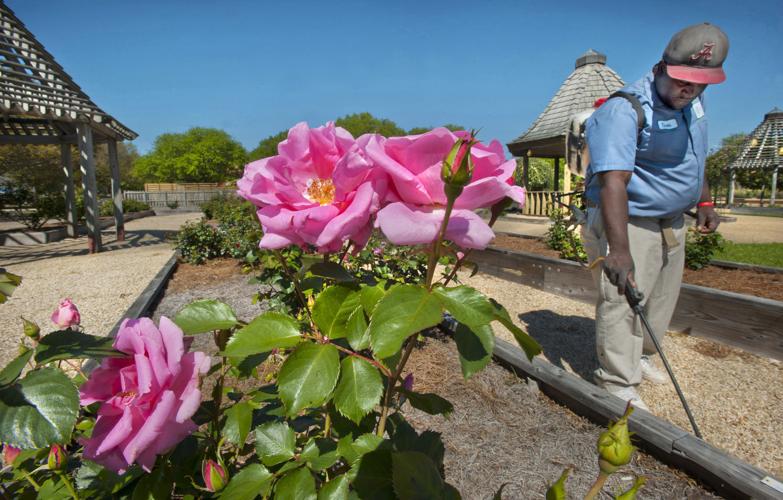Colors enrich, beautify and unify our landscapes. When adding color to the landscape, we often rely on flowering bedding plants and perennials. However, they add considerably to the effort spent on landscape maintenance.
We can minimize the size and number of higher maintenance flowerbeds if we also rely on permanent plantings of woody plants, like trees, shrubs and vines, to provide seasonal color to the landscape. With careful selection, permanent plantings can contribute to landscape color year-round.
Here are trees, shrubs and vines that produce seasonal colorful flowers or fruit throughout the year. This is by no means a comprehensive list, but I’ve selected some of the colorful plants that tend to be especially reliable here.
WINTER (December/January/February) Even in the cold weather of January, we have blooms. Camellias (Camellia japonica and hybrids) are the most popular winter flowering shrubs. There are many, many cultivars that produce plants with growth habits from short to tall and flowers in many colors, primarily shades of red, pink and white.
There are many hollies that provide colorful bright red berries over the winter. The Burford holly, Savannah holly, yaupon holly and deciduous holly are particularly colorful.
Loropetalum (Loropetalum chinensis) is an excellent choice for landscape color. The foliage of most cultivars is a rich burgundy or purple and people often choose to plant it for this reason. But, in mid to late winter this shrub produces abundant magenta flowers that look like a colorful fringe along the branches. Yellow jessamine (Gelsemium sempervirens) is an evergreen native vine that produces fragrant, showy yellow flowers in January and February.
Taiwan cherry (Prunus campanulata) blooms in February with richly colored fuchsia flowers and is the best flowering cherry tree for our area. Japanese magnolias are also notable for February flowers. The flowers are large and showy and there are numerous varieties to choose from. Less well-known but very worth planting is the Japanese apricot (Prunus mume) that blooms in January and February with showy flowers in shades of white, pink and red.
SPRING (March/April/early May) Spring is an amazing time of year for flowering trees and shrubs, and there are so many to choose from. Azaleas are one of the most notable shrubs for spring bloom. Indica azaleas are large growing, old-fashioned azaleas that cover themselves with flowers in March or early April, but there are many other types of azaleas to choose from.
Numerous small flowering trees bloom in spring, including redbud (Cercis canadensis, native), parsley hawthorn (Crataegus marshallii, native), American fringe tree (Chionanthus americana, native), Chinese fringe tree (Chionanthus retusus) and silverbell (Halesia diptera, native).
Besides azaleas, shrubs like bridal wreath spirea (Spirea x vanhoutei) and Indian hawthorn (Raphiolepsis indica) also bloom in spring. Virginia willow (Itea virginica) is a native shrub that produces spikes of white flowers in spring and outstanding burgundy foliage in fall.
A great spring/early summer flowering native vine is coral honeysuckle (Lonicera sempervirens). The vibrantly colored coral, tubular blooms are irresistible to hummingbirds.
SUMMER (late May/June/July/August/September). Roses begin blooming in April and continue through the summer, but in May they look particularly nice. For lower maintenance, focus on landscape roses like Drift series (which are excellent to replace bedding plants in flowerbeds), Knock Out series and Belinda’s Dream. Hydrangeas (Hydrangea macrophylla) are among our best early summer flowering shrubs for shade to part shade. Gardenias provide extraordinary fragrance along with their beautiful white flowers in late May into June.
Crape myrtles deliver more summer color to our area than any other tree or shrub. Ranging in size from 10 to 30 feet, they come in many colors. Oleanders (Nerium oleander) are large shrubs that begin blooming in May, and continue producing clusters of showy flowers in red, pink or white through the summer.
Lavender blue flower spikes are produced by vitex trees (Vitex agnus-castus) in mid to late summer. Vitex can be grown as a large shrub or trained as a small tree. Althea or rose of Sharon (Hibiscus syriacus) is a large growing shrub that blooms most of the summer in various colors.
Limelight hydrangea (Hydrangea paniculata) produces its showy greenish-white flower clusters in June and July. The flowers persist on the plant slowly turning pink then dark rose in the fall. Encore azaleas were bred right here in Louisiana by Buddy Lee and begin blooming in late summer continuing into the fall. They come in a variety of colors and shrub sizes.
FALL (late September/October/November/early December) The native American beautyberry (Callicarpa americana) is grown for its attractive fruit. Clusters of showy purple berries occur along arching stems in the late summer and fall.
Although they bloom through the summer, roses produce another outstanding floral display in the fall from October to December.
The color in our fall landscapes would be much diminished without sasanquas (Camellia sasanqua) and varieties of Camellia hiemalis like the very popular Shishi Gashera. There are many cultivars in a wide variety of colors and growth habits. Sasanquas are one of our very best and most reliable landscape plants. The golden wonder tree (Senna splendida) is a small tree that produces an amazing display of golden flowers from October to December.
Landscapes using permanent plantings that are colorful year-round can be achieved with thoughtful plant selection. This column includes just a few of the many trees, shrubs and vines to consider.
GARDEN TIPS
Prune off any freeze damage caused to gingers, elephant ears, philodendrons, cannas and other herbaceous tropicals as it occurs this winter. Place a 4-to-6-inch layer of mulch, such as pine straw, around the base of the plants to protect the crown and rhizomes.
Flower seeds that may be sown now (the sooner the better) include alyssum, candytuft, forget-me-not, poppies, snapdragon, pansy, viola, dianthus, calendula, sweet pea, larkspur, cornflower, lupine, delphinium, hollyhock and annual phlox. Transplants of these purchased from area nurseries could also be planted now.
Oxalis, a clover look-alike, is one of the worst weeds this time of year. For physical control, you must remove the carrot-like root or bulbs attached to the leaves. Dig them out with a trowel. An alternative is to use a systemic herbicide such as glyphosate (Eraser, Killzall, Roundup and other brands). Only apply the herbicide to the foliage of the oxalis and do not allow it to get on the leaves of any desirable plants nearby. More than one application will be needed — be persistent.
Late December through early January is the time to plant those tulip and hyacinth bulbs that have been chilling in your refrigerator (won’t it be good to get the room back?). It is easy to force some of the hyacinth bulbs to bloom indoors. Place the bulbs half-deep in a bowl of pebbles. Add enough water to touch the bottom of the bulbs and maintain it at that level. Place in a sunny window in a cool room. The wonderfully fragrant flower spikes should appear in four to six weeks.
GARDEN QUOTE
‘Colors are the smiles of nature.’ Leigh Hunt, author
Garden columnist Dan Gill answers readers' questions each week. To send a question, email Gill at dgill@agcenter.lsu.edu.

